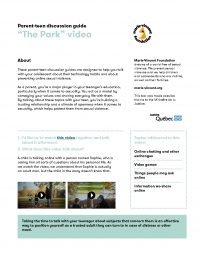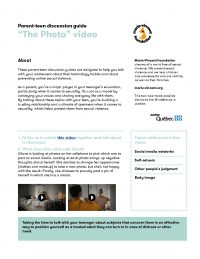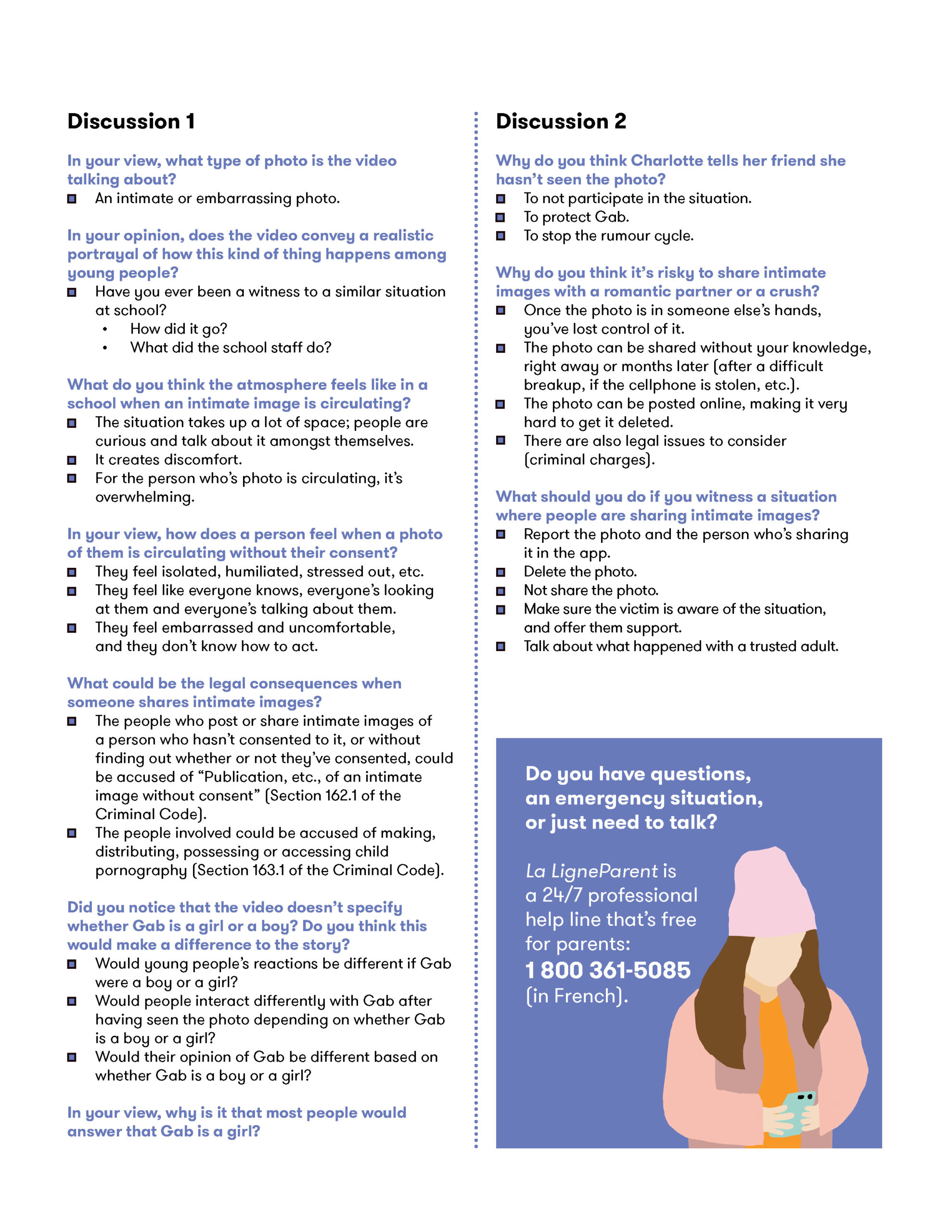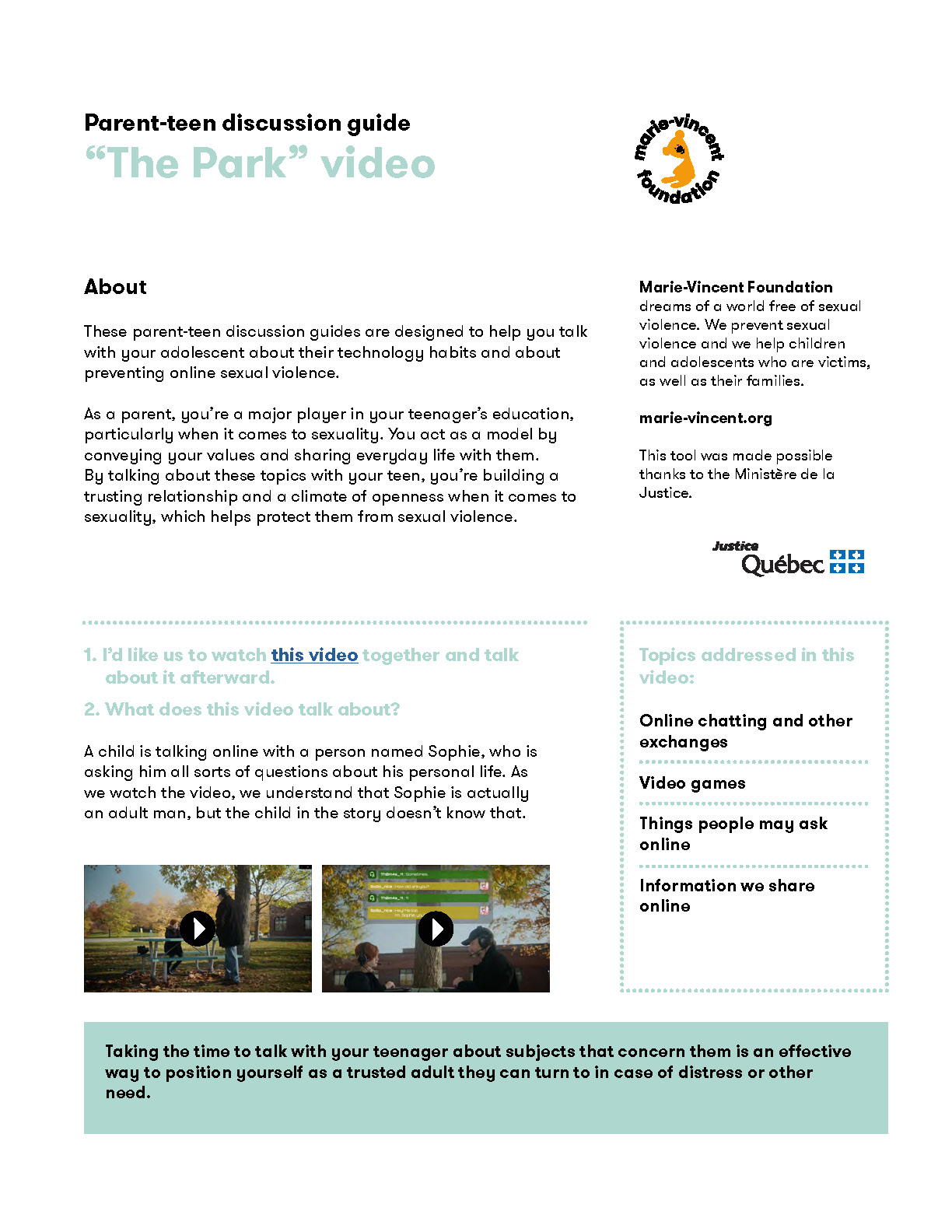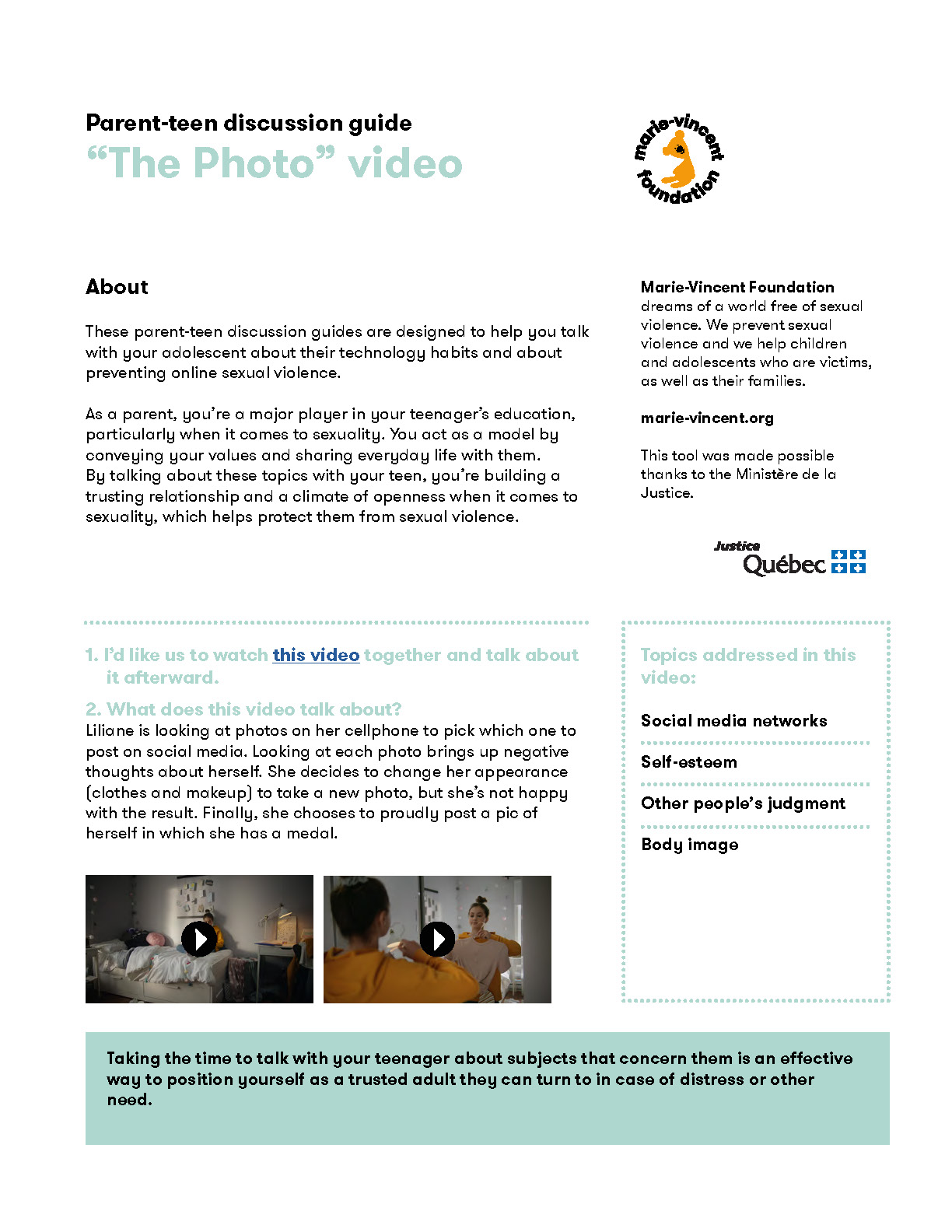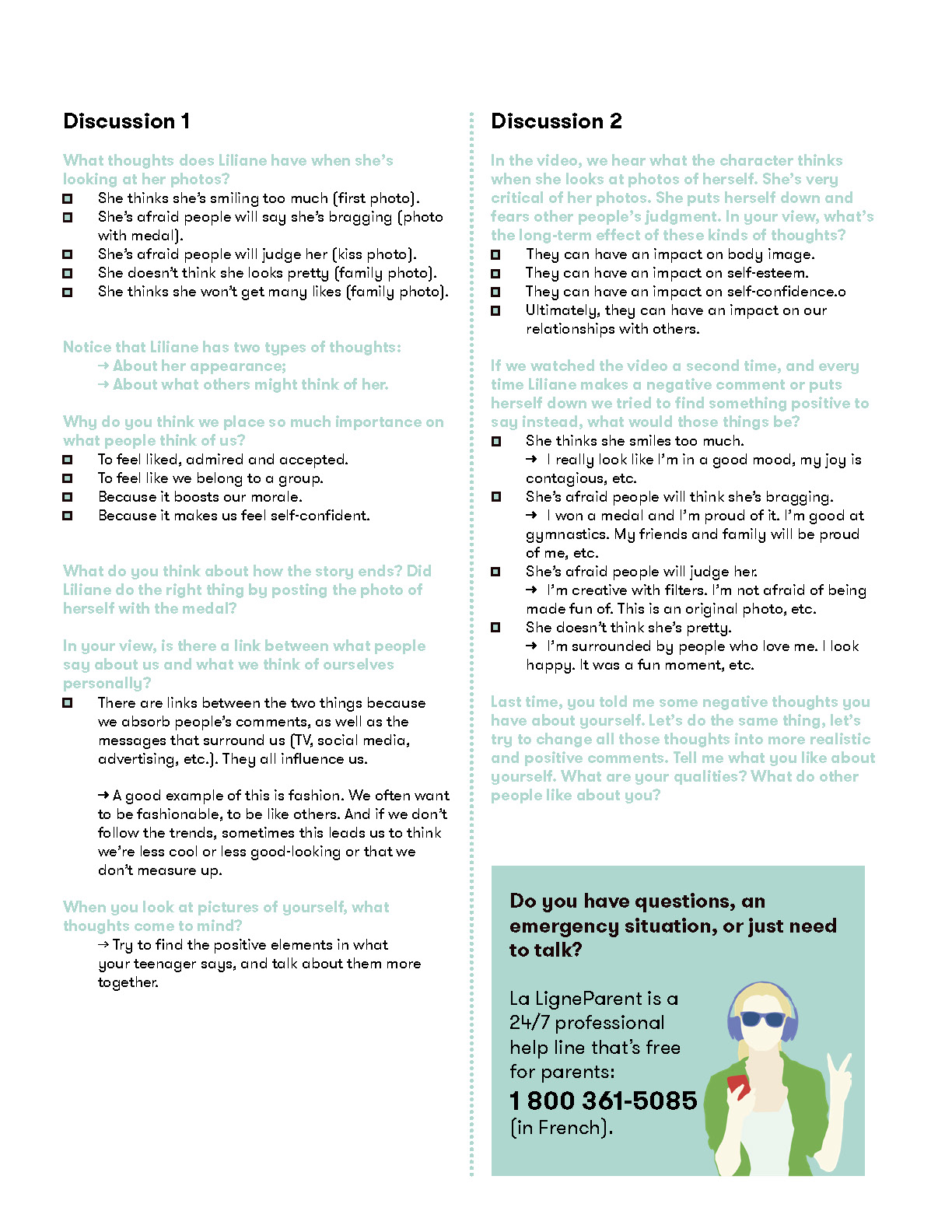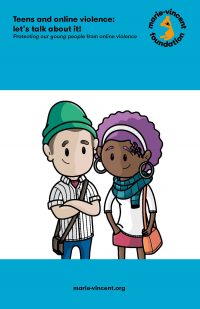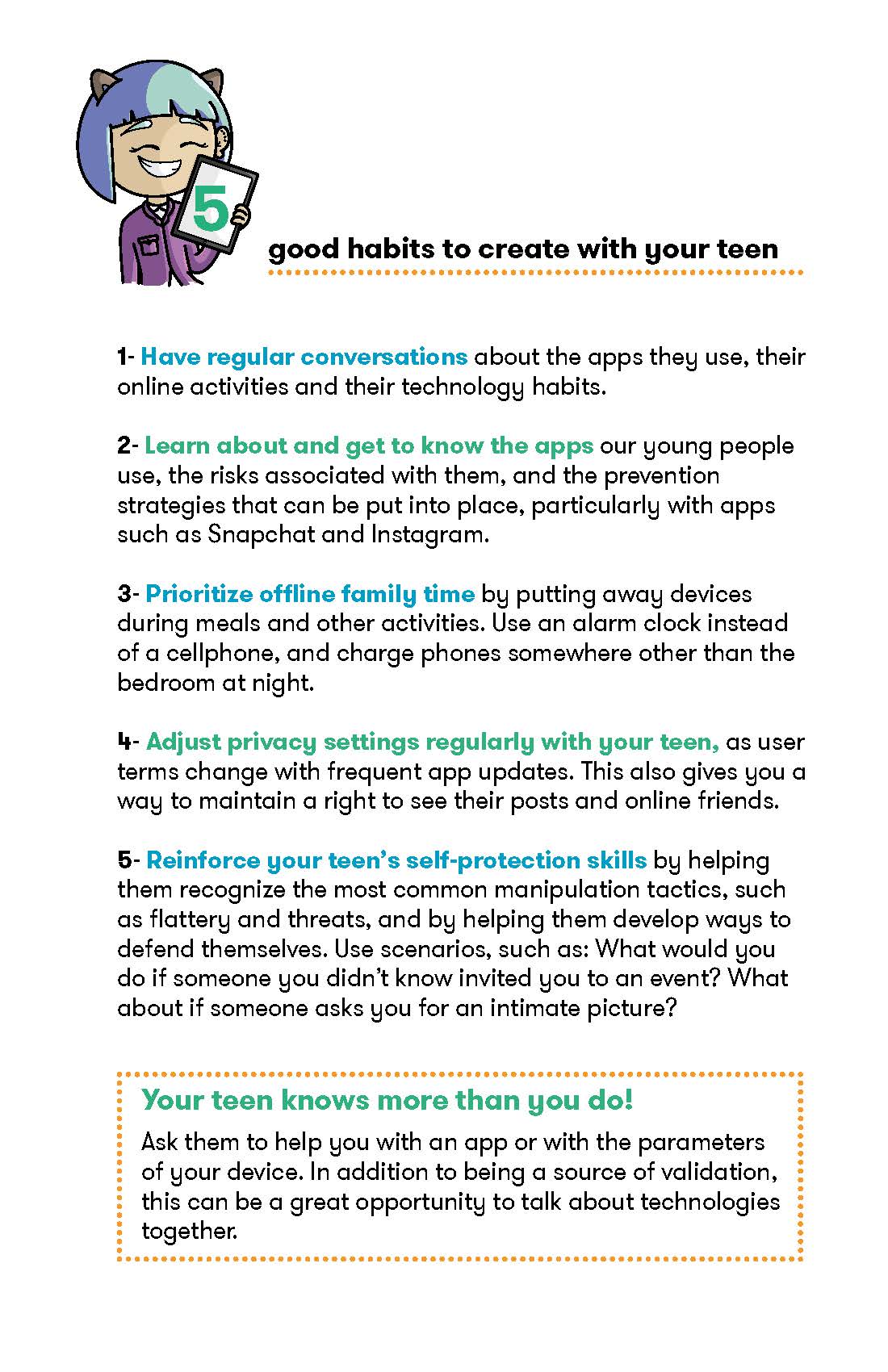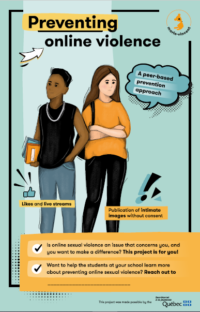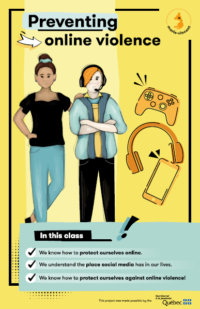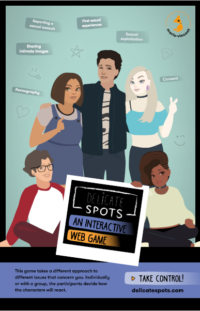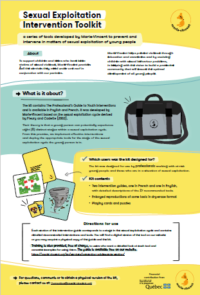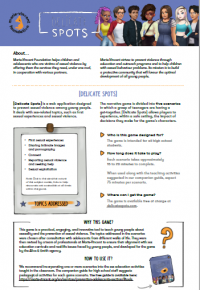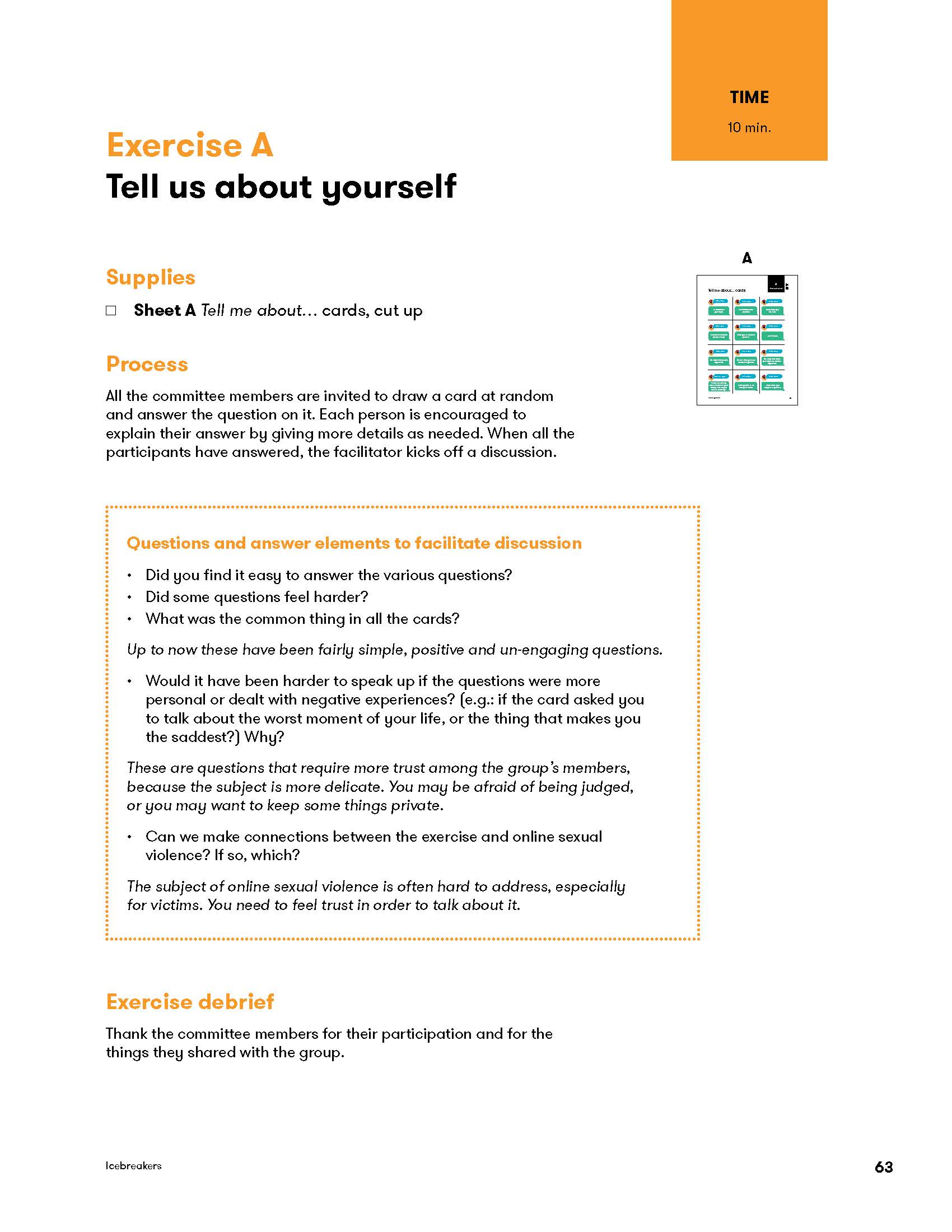There’s no denying the increasingly pervasive presence of technology in our day-to-day lives. Teenagers—and the adults around them—need to learn how to handle a vast amount of information and a wide range of apps and trends.
We now know that adolescence is an important stage where young people develop their identity and discover their sexuality. This chapter of their lives is also marked by a tremendous need to belong and to be accepted. Thrill seeking, impulsiveness and a thirst for independence are also prevalent. Teenagers use different communications technologies, namely applications and messaging systems, to answer these needs far from the watchful eye of their parents. Sadly, these adolescence-specific elements—coupled with technology—make young people particularly vulnerable to manipulation and to the influence of other people.
Technology plays a central role in young people’s lives:
- 9 out of 10 teenagers have access to a computer at home.
- 8 out of 10 teenagers own a smartphone.
- 60% of all teenagers use their smartphone over two hours each day.
This strong online presence provides teenagers with several advantages, namely easy communication with their peers and with communities they belong to, as well as increased knowledge and skills on a wide range of topics. However, it does also involve some disturbing drawbacks. In the virtual world, young people may encounter people with ill intentions or misuse diverse types of technology. The risks related to various types of online sexual violence warrant more attention due to their devastating impact on teenagers.
Articles in this section were created to provide any parent or significant adult in a teenager’s life with the necessary tools to deal with young people’s use of technology. They will help maintain an ongoing dialogue with their youngsters and ensure they stay safe and sound when surfing the web.






















